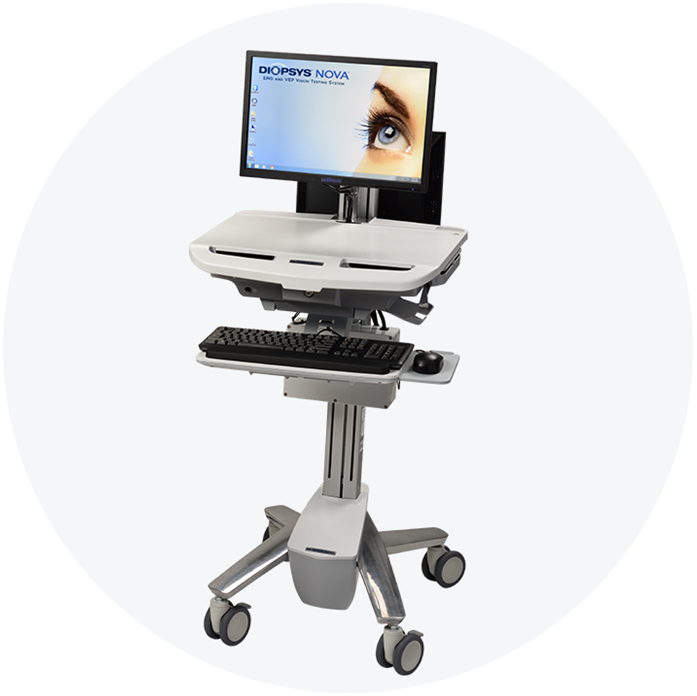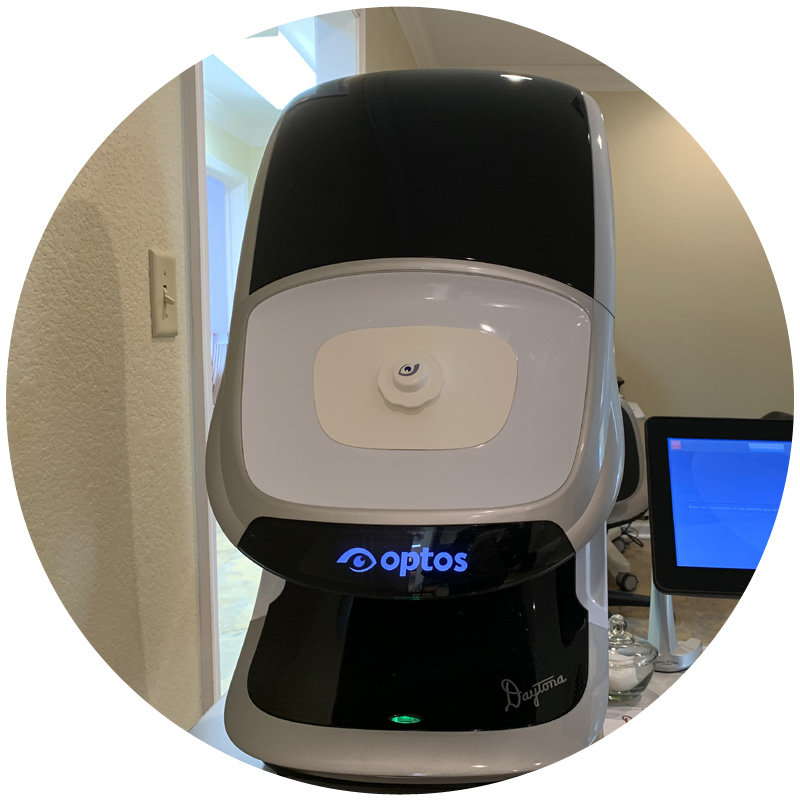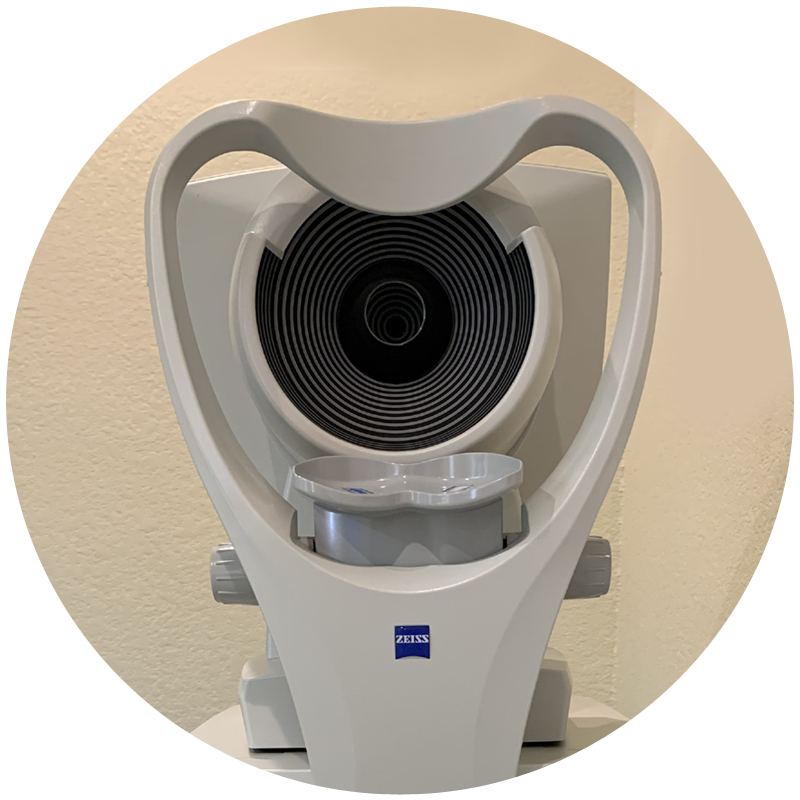DIAGNOSTIC EQUIPMENT
The art and science of optometry encompasses the gathering and interpretation of a multitude of information. Our eye care clinic utilizes the most up-to-date instrumentation because our optometrists feel that we owe it to our patients to exceed the accepted standards of practice. Our optometrists are able to evaluate your vision and eye health to a more detailed degree than an average eye exam allows. This state-of-the-art technology not only allows us to maximize on the level of your visual acuity, but also allows for optimal prevention of vision loss through early detection of disease processes.
The examination equipment at our clinic is up to date. Our eye doctors chose each piece specifically because of its specific qualities and capabilities. These instruments are the work horses of our eye practice and must be durable, accurate, and patient friendly. Only well known, industry leading companies were considered…leading to our equipment from Marco, Humphrey/Zeiss, Optos, Topcon, and Haag-Streit. These instruments are used in every aspect of your eye examination. While some of this equipment may be used by other eye doctor offices, there are several that are less common and more unique to our clinic.
On Site Ophthalmic Lab
Even our optical lab utilizes a top of the line edging system to fabricate ophthalmic lenses…. to keep you seeing your very best!
We Invest In New and Emerging Technology
Our eye care clinic has invested heavily in new and emerging technologies for disease detection and management, patient screening and medical records management.
Diopsys NOVA Electroretinography System
This technology allows our doctors to more thoroughly evaluate the optic nerve and the retina, beyond conventional methods. It can detect reduced function of the visual system even before there are any visible signs of disease! It is especially helpful because it does not require verbal or physical response from the patient. Similar to the way that an electrocardiogram (EKG) measures heart function, the electroretinogram (ERG) measures retinal function. We basically place 3 electrodes – one on each lower eyelid and one on the forehead. The patient then simply looks at different patterns on a screen. The instrument measures the eye’s response to those images.
We use this system for the following reasons:
– Early detection: as stated above, the ERG can pick up on very subtle changes in the optic nerve and retina. Catching disease in its early stages gives us the opportunity to intervene so that we can slow or stop its progression.
– Enhanced patient management: the ERG also helps the doctor to manage retinal disorders, even when cataracts or ocular inflammation may obscure the view of the retina. The doctor uses the information to determine how well the treatment plan is working to manage the disease. This technology is also used to diagnose and manage neuro-visual disorders like amblyopia (lazy eye) and traumatic brain injury. Because it is a form of objective testing, it can be used for non-verbal patients.
– Screening at risk patients: The ERG is especially helpful in easily screening patients with diabetes. The ERG can detect early signs of diabetic retinopathy that are not yet visible with conventional evaluation. This allows the doctor to counsel the patient on the need for better control of their glucose levels and to communicate this information with the PCP or endocrinologist.

Daytona P200T Ultrawidefield Imaging System
The Daytona P200T allows us to digitally image the structures of the internal eye for our patients. It allows our eye doctors to evaluate overall eye health and document it for future reference. This serves as a great screening tool and provides detailed documentation. The Daytona P200T image does not require drops and has no side effects.


HD-OCT Nerve Fiber Analyzer
This piece of equipment allows our eye doctors to test for a variety of neurological conditions that can be present with visual changes. It is most often used in the diagnosis and management of glaucoma. It can also be used to help detect the presence of brain tumors, multiple sclerosis, or other medical conditions that affect the visual system. We also use it to monitor patients who take certain systemic medications, prescribed by other doctors, that may affect the vision.


Zeiss Corneal Topographer
Zeiss Corneal Topographer allows our eye doctors to correctly and precisely measure the curvature of the cornea. This instrument is used to detect, diagnose, and monitor corneal conditions that may cause decreased vision. It is helpful in monitoring irregular astigmatism after a corneal transplant. We also utilize the corneal topographer in specialty contact lens fittings.


